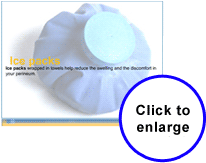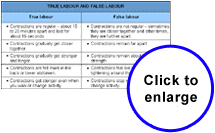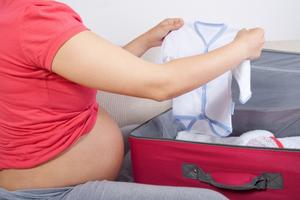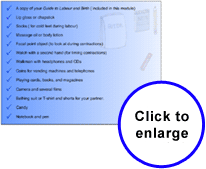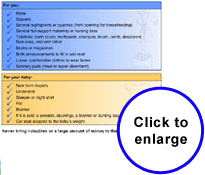MODULE 7
Healthy Birthing
1. Physical Care
After a cesarean birth, you will likely experience pain from your incision. Don't hesitate to ask if you need pain medication.
For the first 24 hours after the birth, you will have an IV to make sure you get enough fluids and a bladder catheter to help you urinate. You will be offered fluids and will slowly be encouraged to eat if you feel like it.
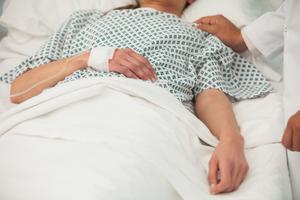
To make it easier to have a bowel movement after surgery, drink plenty of liquids and walk as much as possible. Your health care provider may suggest a stool softener or mild laxative. When you have a bowel movement, support your incision with your hands while you push gently.
After a cesarean, limit your activities such as lifting, hauling, and pushing for four to six weeks to allow the incision to heal.
c. Care after a Cesarean Birth
After a cesarean, your care in the hospital will be a little different. If you have any questions, talk to your health care provider.
You may also find that you have feelings that you didn't expect, especially if you had planned a vaginal birth. These feelings are normal. Talk about how you feel with your partner, your health care provider or someone you trust.
Test Your Knowledge
|
|
The following exercise will help you learn a little more about what you can expect after childbirth.
Click on the option button which corresponds to the correct answer and verify your answer by clicking on the "Check" button.
|
1 |
While the uterus is returning to its normal size, you may feel cramps in your abdomen. |
|
2 |
Lochia is vaginal discharge and looks much like a menstrual period. |
|
3 |
After childbirth, a woman should stay in bed as much as possible. |
|
4 |
The mature milk production begins two to four days after delivery. |
|
5 |
Breastfeeding delays the return of your period. |
b. Physical Discomforts
Let's look at the causes of physical discomfort after a vaginal delivery and discuss coping techniques.
Whether you have had an episiotomy or not your perineum (area between the vagina and the rectum) will be swollen and sore.
Here are a few tips to soothe perineum pain.
Pushing during delivery may cause hemorrhoids. If you had some during your pregnancy, the delivery may have increased the swelling and the pain.
Here are a few tips to relieve the swelling and the pain of hemorrhoids.
Hemorrhoids, which can be quite painful, should disappear on their own as your body recovers from pregnancy and delivery.
E. EARLY CARE OF THE MOTHER
The first few days after your baby's birth are filled with excitement adjustments, and questions. In New Brunswick, a public health nurse will visit you at the hospital or will call you at home. You may be eligible for the Early Childhood Initiatives Program.
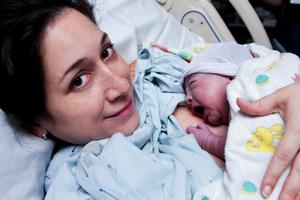
After you return home, you can continue to get information and support by contacting your Public Health Office, Telecare at 1-800-244-8353, or the hospital where you gave birth.
a. Care of the Mother
Whether you have a vaginal or cesarean birth, you will notice many changes in the hours and days following your baby's birth. Physically, your body recovers from childbirth and gradually returns to its pre-pregnant state. Emotionally, you get used to the idea of being a mother and begin to know and love your baby.
Rest and time with your baby will help to ease you through these changes.

While you are in the hospital, your temperature, pulse, and blood pressure will be checked. Your abdomen will be checked to see that your uterus is firm and returning to its normal size. If you have had an episiotomy, it will be checked to see if it is healing well.
Speak to the nurse or your health care provider if you have any questions about your body, your baby, or your new family
c. Departure
Your health care provider will give you advice about when you should go to the hospital.
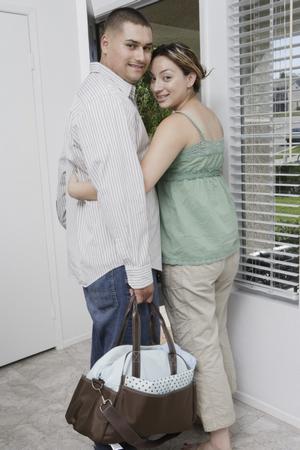
Generally, you should go to the hospital if one of the following situations occur.
- If your waters have broken (rupture of the membranes)
- If you have vaginal bleeding
- If your contractions are five minutes apart and the hospital is located less than 30 minutes away.
- If your contractions are 10 minutes apart and the hospital is located more than 30 minutes away.
- If you have lasting persistent pain.
When in doubt, call the labour and delivery ward at the hospital.
How to Time a Contraction
- Use a watch with a second-hand and count the seconds out loud.
- Note the time when a contraction begins. Note the time when the contractions ends. This is the length of the contraction.
- Note the time when the next contraction begins. The time between the beginning of one contraction and the beginning of the next contraction is the frequency or how far apart the contractions are .
The following diagram will help you time a contraction.
b. Signs of Labour
During the last few weeks of your pregnancy, your body will give you signs that your delivery is approaching. Here are a few signs that may indicate that your labour will soon begin.
It can be difficult to know whether or not what you feel is really labour. As your body prepares for labour, you may feel certain signs known as false labour. These signs are similar to true labour.
The following table can help you differentiate between true labour and false labour.
Find out in advance whether you should call your health care provider or a triage nurse when you are wondering if you are really in labour.
D. TIME TO GET READY
a. The Suitcase
Pack Your Suitcase Before You Need It
Think about packing two bags: one with things you will want during labour, another with things you will need during your hospital stay. The second bag should contain the clothes that you and your baby will wear home.
Here are a few suggestions to help you prepare what you will need during labour and delivery.
Here are a few suggestions to help you prepare what you will need for your stay at the hospital.


